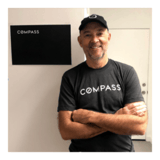Summary
DesignOps is all about scaling up design teams while creating organizational efficiencies yet it is not always evident how impact and gained efficiencies can be quantified and measured. There’s a certain confusion around what are the inefficiencies and there is no established process to determine those metrics. This session is not about providing a list of metrics to be replicated. It’s about providing a tested approach on how to identify, quantify, and measure inefficiencies and how to define measurable and realistic targets. This approach can be applied and replicated in any context to support the DesignOps community to gain additional credibility and to ensure DesignOps professionals are able to demonstrate the value of their work to the business with objective data points and quantifiable gains.
Key Insights
-
•
Value in design ops is relational and shaped by the customer’s context and perception, not just monetary worth.
-
•
There are three distinct customers in design ops: business, design leads, and design teams, each requiring balanced consideration.
-
•
Efficiency is about maximizing output while minimizing input, and can be influenced along the dimensions of time, cost/resources, and quality/scope.
-
•
System thinking is crucial because changes in one part of the design ops system affect the entire value delivery process.
-
•
KPIs in design ops are unique to each organization and moment in time, reflecting strategic priorities rather than fixed metrics.
-
•
Hypothesis-driven experimentation allows design ops teams to identify high-impact opportunities tailored to their specific context.
-
•
Non-design tasks, like research participant recruiting, often consume significant designer time and reducing them boosts overall performance.
-
•
Improvements in one efficiency dimension create cascading positive effects across design teams, leadership, and business outcomes.
-
•
Design ops acts as a bridge translating design efforts into business language, helping to demonstrate impact to stakeholders.
-
•
Linear thinking limits design ops effectiveness; embracing system complexity unlocks unique organizational footprints and sustained value.
Notable Quotes
"I’m a big experimenter. I like trying new things, imagining ways of doing all things."
"Value is not worth; it’s the quality in a relationship shaped by context and experience."
"The famous triangle of time, cost, and quality is how we operate on efficiency."
"Without data, we are just a person with an opinion."
"System thinking means you make a change to a part and the whole system changes."
"There are no design ops KPIs. They are the KPIs that work for you, your team, and your context."
"The designers were not doing design work, they were doing non-design tasks that took up to 2.5 days per project."
"If you don’t have clarity over strategic goals and context, you’ll have impact but not the right or maximum impact."
"KPIs are relational; they depend on relationships at very different levels."
"Design ops should be the bridge between business and designers to create value for all three customers."
Or choose a question:















More Videos

"A good story that people can retell is key for global communication, even if it distorts a bit."
Adam Cutler Karen Pascoe Ian Swinson Susan WorthmanDiscussion
June 8, 2016

"If you’re doing a lot of work that’s not in your job description, you might actually be doing leadership."
Peter MerholzThe Trials and Tribulations of Directors of UX (Videoconference)
July 13, 2023

"Everything that has been put online, someone like us made and put there; we bake our own biases into it."
Lisa WelchmanCleaning Up Our Mess: Digital Governance for Designers
June 14, 2018

"Green spaces in cities can greatly enhance our quality of life and resilience."
Vincent BrathwaiteOpener: Past, Present, and Future—Closing the Racial Divide in Design Teams
October 22, 2020

"Engineers can be our biggest allies in making really important process changes."
Brenna FallonLearning Over Outcomes
October 24, 2019

"It’s human infrastructure—community organizing, unions, activists—that saves the day when other infrastructures break down."
Tricia WangSpatial Collapse: Designing for Emergent Culture
January 8, 2024

"We used a Python algorithm with a correlation matrix to identify meaningful clusters from survey responses."
Edgar Anzaldua MorenoUsing Research to Determine Unique Value Proposition
March 11, 2021
"Successful operations must have a well-laid-out and transparent process and documentation, but that process must become invisible in its application."
Designing Systems at Scale
November 7, 2018

"Conversion design means to create intentional change."
Erin WeigelGet Your Whole Team Testing to Design for Impact
July 24, 2024
















